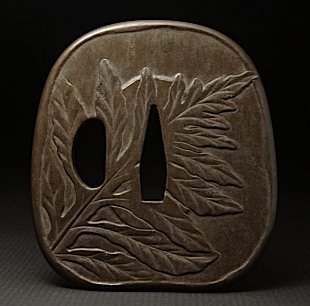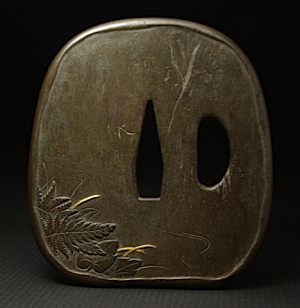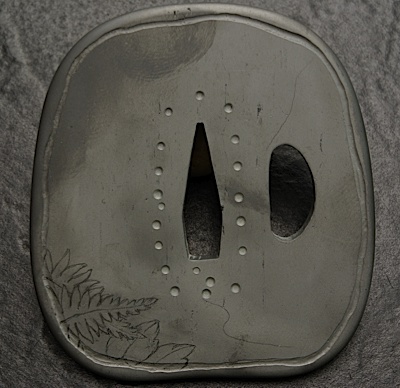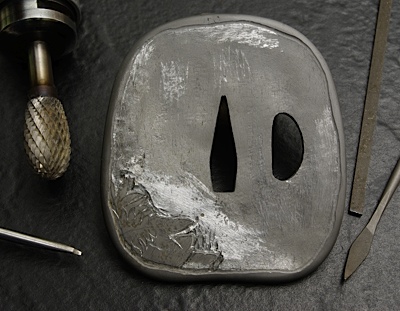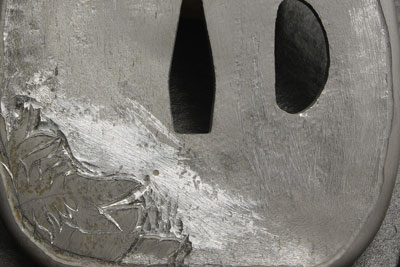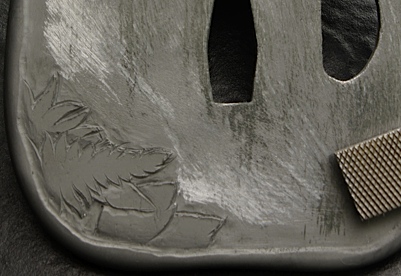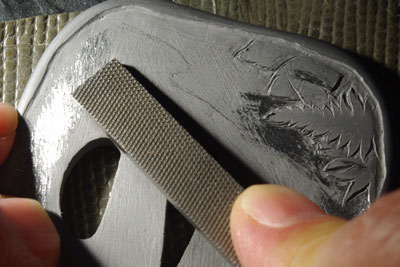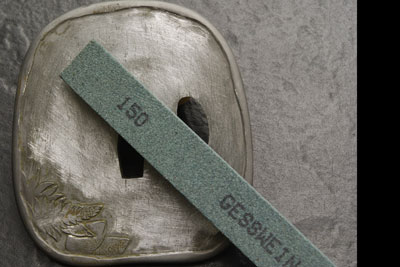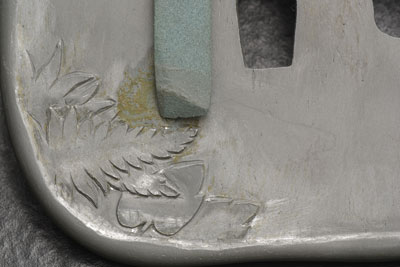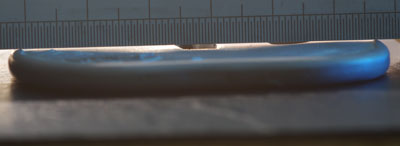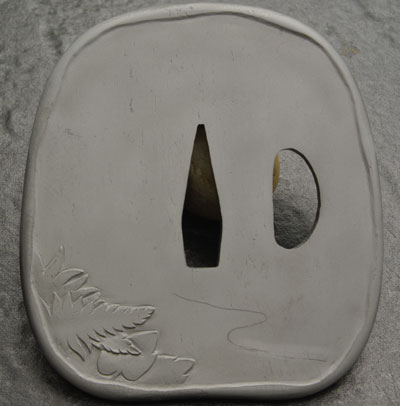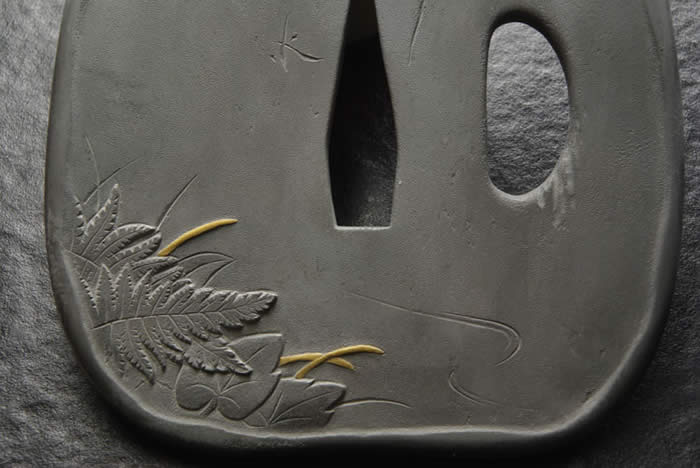| File & Stone finishing Tutorial | ||||||||||||||||||||
| home Link to other tutorials copyright 2010 Jim Kelso | ||||||||||||||||||||
| Recent works To Archives & Jewelry | ||||||||||||||||||||
|
||||||||||||||||||||
collection of Kiyomizu Sannenzaka Museum |
||||||||||||||||||||
I struggled with what to focus on in this tutorial and in the end decided to concentrate on the use of files and stones in leveling the background of this tsuba. I felt this would be useful no matter what the extent or type of engraved detail. A simple contour can actually be fairly difficult to achieve, but a few tips can make it much less difficult and more enjoyable. For me flat files and stones are indispensible in achieving a flat or gently sloping contour. To check progress I use heavy side-light which reveals the slightest surface variation. Also, I find a light sand-blast with 400g aluminum oxide very effective in evening the light, thus revealing all imperfections. I have been using Gesswein stones which I recommend. I haven't tried other brands. I find their regular Moldmakers' stones to work well in iron and non-ferrous. I also use their Ultrasoft stones in finer grits for polishing carved elements, but find that it's risky to use them on flat surfaces as they tend to gall. If I'm polishing a flat surface to a high polish, I'll use stones to about 600 and then use paper from there on. I recommend getting a hard-copy of the Gesswein Mold and Diemakers' catalogue as it is easier to survey than online.
|
||||||||||||||||||||
Final finish before patina. 61 mm wide
|
||||||||||||||||||||
